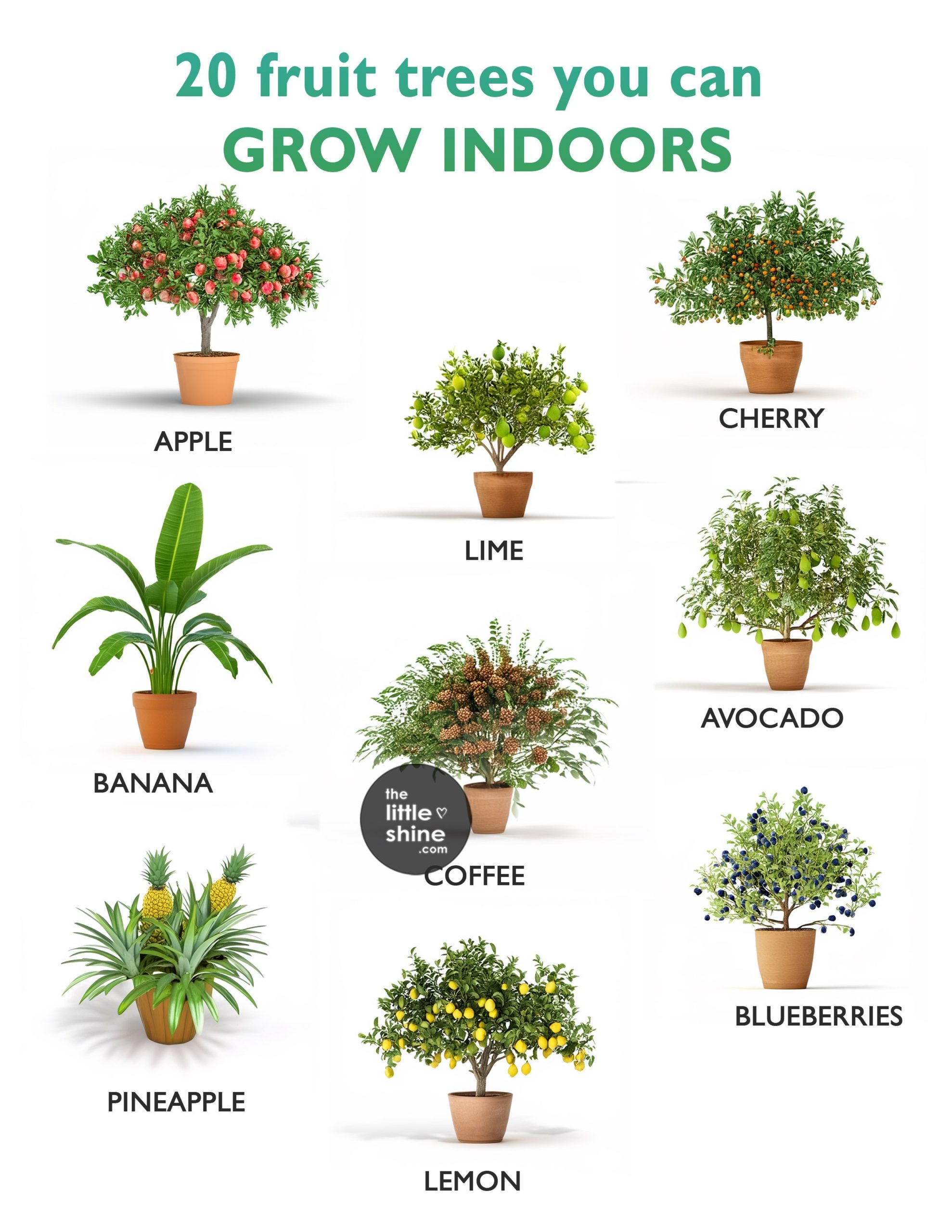Are you looking for indoor plants/trees that can be both used for ornamental purposes and of course, bear fruit that are edible as well?
Guess what! There are fruit trees of the dwarf variety, that can be grown indoors, like lemon tree, mulberry tree, kumquat tree, pineapple plant and more!

Check out this article for more details on the different types of dwarf fruit-bearing trees that you can grow indoors.
What are Dwarf Fruit Trees?
Dwarf fruit trees are those that are small and stunted and grow only to a height of 8 to 10 feet. They are best suited for areas with lesser space and can be grown in pots. Places like patios, balcony gardens etc.
These dwarf fruit trees are created by grafting fruit varieties onto a rootstock that is dwarfed. Thus, its overall size gets restricted.
Benefits of Dwarf Fruit Trees
I’m sure many of you might be wondering whether dwarf variety fruit trees actually produce edible fruit or whether they’re just for ornamental purposes.
Well, the fruit produced by dwarf variety trees are definitely a hundred percent edible! In fact, growing dwarf variety fruit trees do have a lot of benefits as well. Check them out below:
1. They are easier to maintain:
Dwarf variety fruit trees require less maintenance because they have less surface area and occupy lesser space.
2. They require less water:
If you live in a place that is drought-prone or suffers from shortage of water, then these trees can suit you just fine. While dwarf trees do require regular watering, they do not require too much water. Therefore, avoid over-watering dwarf variety fruit trees.
3. Bears fruit faster:
Dwarf variety fruit trees mature much faster as compared to the standard-sized trees. Thus, these trees bear fruits faster. Some dwarf variety fruits can even start bearing fruits within 2 to 3 years, rather than wait for 5 to 7 years, for a standard-sized tree to bear fruit.
4. Require less space to grow:
If you do not have even garden space or even if you want to grow the dwarf tree indoors in a pot, it is possible. These trees have very shallow roots and require less space to grow.
How to Grow/Plant Dwarf Trees Indoors?
Step 1: Know the basics
Keep a few things in mind like how much water these dwarf trees need, how much sunshine and also to keep it away from pests, as dwarf fruit trees are susceptible to pest infestation.
Step 2: Plant the right type of tree
Make sure to visit a nursery and buy an already grated dwarf fruit tree. Dwarf fruit trees cannot be grown from a seed. Make use of live plants (cultivar), a plant variety that has already been produced while in cultivation.
Step 3: Pot your tree the right way
Start off by using a big enough pot. Thereafter, fill the pot up to half in soil (shape it like a cone. Then, trim off any extra roots or dead roots and fit it into the soil. The highest roots should be on top of the soil cone. Lastly, fill up the rest of the pot with soil and water it well.
Step 4: Water as required and do not over-water
Watering your dwarf fruit trees regularly is essential, but do not over-water, as it can cause the roots to decay.
20 Dwarf Fruit Trees You Can Grow Indoors
1. Apple
2. Pear
3. Lime – Be sure to purchase a dwarf variety, and you’ll be making key lime pie before you know it.
4. Cherry
5. Plum
6. Fig – prefers a humid environment, so water them regularly and and place it in a location that gets full sun for 6-8 hours a day.
7. Lemon – Easy to grow and makes a natural choice for your sunny living room.
8. Peach
9. Pineapple
10. Almond
11. Goji Berries
12. Olive
13. Coffee
14. Kumquat
15. Avocado – pick a location that gets bright sun for at least six hours per day. Keep your avocado’s soil moist, but not soggy.
16. Mulberry
17. Pomegranate
18. Banana – Bananas, like avocados, are another fruit tree that can grow insanely tall. Be sure it gets full sun for 6-8 hours a day.
19. Apricot – is an excellent dwarf apricot, reaching only six feet high.
20. Orange – a good choice for anyone looking for a fun citrus for cooking. They prefer full sun.
